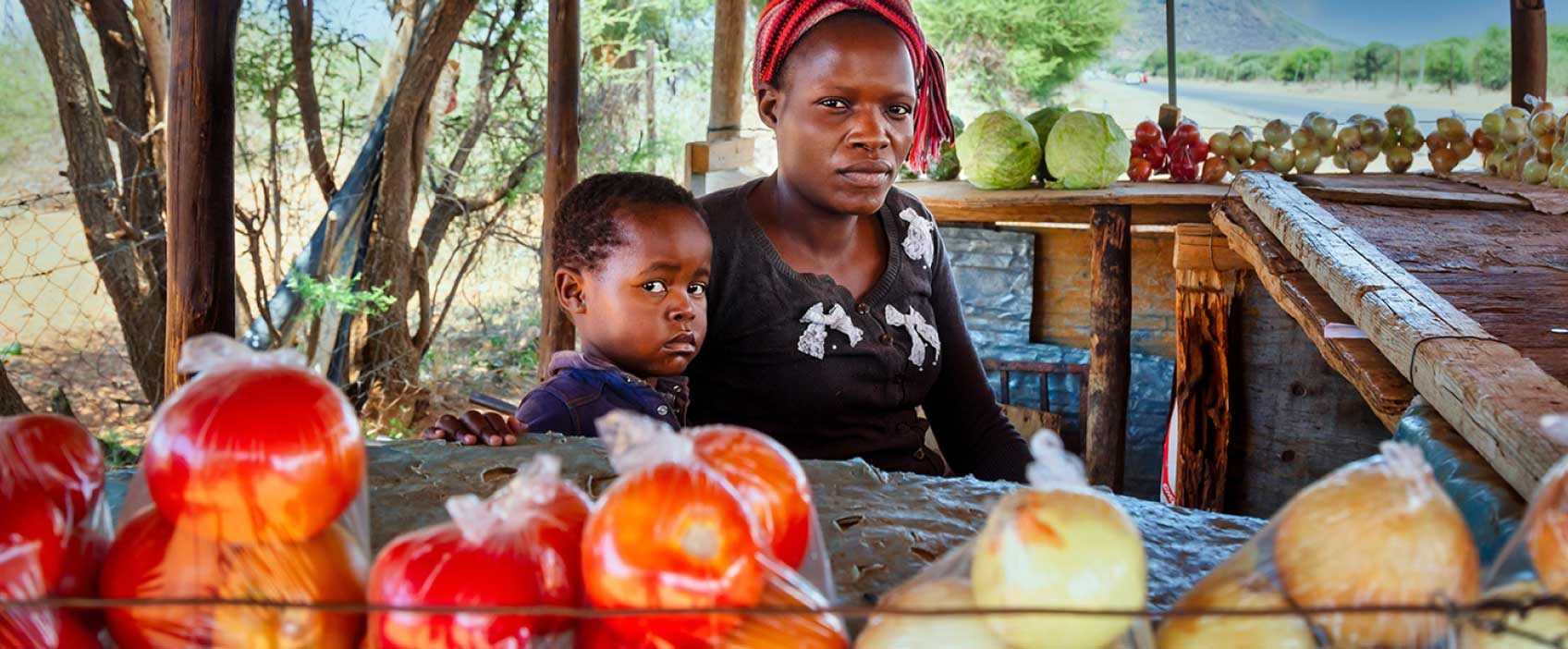
IFPRI Publications: Books
Explore Our Latest Books
By Title By Author By Country/Region By Keyword
Book
Contract Farming in Developing Countries: The promise and its perils
Book
Managing agricultural enterprises and developing agricultural value chains: Cases on agribusinesses
Book Chapter
Between tradition and modernity: Exploring the differences in factors driving happiness in indigenous and the general population in Bangladesh
Book Chapter
Climate change and food security in Africa’s drylands
Book Chapter
New breeding trends in sorghum
…more
Gogoi, Bonti; Punnuri, Somashekhar; Thudi, Mahendar; Govindaraj, Mahalingam; Are, Ashok Kumar; Jiao, Yinping; Chopra, SurinderBook Chapter
The agrifood system: structure and contribution to development goals
Book Chapter
Agrifood trade
Book Chapter
Dietary quality and nutrition: Past progress, current and future challenges
Book Chapter
Conclusion: From recovery to renewal of the agrifood system
Book Chapter
Crop production: An engine in need of an upgrade
Book Chapter
Agricultural land: Inequality and insecurity
Book Chapter
Livestock, capture fisheries, and aquaculture: Status and recent trends
Book Chapter
The rice sector
Book Chapter
Introduction [in Myanmar’s agrifood system: Historical development, recent shocks, future opportunities]
Book Chapter
Agricultural value chains: Examples of quiet transformation
Book Chapter
Vulnerability and welfare during multiple crises
Book
2024 annual trends and outlook report: Advancing the climate and bioeconomy agenda in Africa for resilient and sustainable agrifood systems
Book Chapter
A historical and regional perspective on Myanmar’s agrifood system
Book
Myanmar’s agrifood system: Historical development, recent shocks, future opportunities
Book Chapter
Food processing: A stalled transformation
Book Chapter
Farm commercialization: A transformation on hold or in reverse?
Book Chapter
Women and youth in agriculture
Book Chapter
Migration trends and implications
Book Chapter
Income diversification and the rural nonfarm economy
Book Chapter
Regional variations in rural livelihoods: Challenges and opportunities
Book Chapter
Agricultural mechanization: Drivers and characteristics
Book Chapter
Innovative financing mechanisms for climate adaptation in African agrifood systems
Book Chapter
Introduction [in Advancing the climate and bioeconomy agenda in Africa for resilient and sustainable agrifood systems]
Book Chapter
Climate action and bioeconomy transition: Mainstreaming environmental sustainability in the Post-Malabo Agenda of the Comprehensive Africa Agriculture Development Programme
Book Chapter
The Impact of climate change on agriculture
Book Chapter
Exploring methane emissions in Africa
Book Chapter
Adaptation actions to climate change in African agriculture: Effectiveness and challenges
Book Chapter
The impact of climate change on African economies and opportunities for agrifood system transformation
Book Chapter
The converging climate change and bioeconomy agendas as a pathway toward implementing the post-Malabo CAADP agenda
Book Chapter
Bioeconomy pathways: Experience from Africa, Asia, and Latin America
Book Chapter
Climate risks and vulnerabilities in African agrifood systems
Book Chapter
A nutrition-sensitive circular bioeconomy for food systems transformation in Africa
Book Chapter
Just energy transition: Challenges and low carbon pathways for Africa
Book Chapter
Conclusion [in 2024 annual trends and outlook report]
Book Chapter
Tracking key CAADP indicators and implementation processes [In the 2024 ATOR]
Book Chapter
Navigating the patriarchal politics of institutions: Positioning women and gender equality at the center of agricultural development institutions
Book Chapter
Intra-African trade in virtual water: Trends and drivers
Book Chapter
Overview and Recent Challenges [In Africa Agriculture Trade Monitor 2024]
Book
Africa Agriculture Trade Monitor 2024
Book Chapter
Fruit and vegetable value chains in Africa
Book Chapter
Africa in world agricultural trade: Recent trends and carbon footprint
Book Chapter
Impact of climate change on trade in Africa
Book Chapter
Agricultural trade integration in ECOWAS
Book Chapter
Environmental concerns and agricultural trade: Building a responsible and effective relationship
Book Chapter
Transforming agricultural support for a sustainable future: A Latin America and Caribbean view
Book Chapter
Price volatility, export restrictions and the need for transparency
Book Chapter
Introduction: Creating context and unveiling crucial issues
Book Chapter
Agriculture negotiations priorities and sustainable development at the WTO
Book Chapter
Shaping multilateral trade: The changing institutional landscape
Book Chapter
Global food security concerns and agricultural trade: Building a responsible and effective relationship
Book Chapter
Geopolitical changes and their implications for agricultural trade negotiations
Book Chapter
Public stockholding programs and the WTO
Book Chapter
Proposed pathways for moving forward
Book
Navigating the trade landscape: A Latin American perspective building on the WTO 13th ministerial conference
Book Chapter
Climate smart agriculture and food systems that reduce poverty and hunger
Book Chapter
Climate smart agriculture and food systems that reduce poverty and hunger
Book Chapter
Demographie
Book
Sustainable cassava: Strategies from production through waste management
Book Chapter
Diets and nutrition: The potential of a food systems approach
Book Chapter
Plant-source foods: Leveraging crops for nutrition and healthy diets
Book Chapter
Animal-source foods: Their role in sustainable healthy diets
Book Chapter
Food environments: Improving their healthfulness
Book Chapter
Diet affordability: Understanding the high cost of healthy diets
Book Chapter
Advancing nutrition: Food system policies and actions for healthy diets
Book Chapter
Improved governance: Creating supportive environments for diet and nutrition policies
Book Chapter
Demand-side approaches: Supporting healthier food choices
Book
Global food policy report 2024: Food systems for healthy diets and nutrition
Book Chapter
Regional developments [in 2024 Global Food Policy Report]
…more
Pechtl, Sarah; Kishore, Avinash; Nguyen, Phuong Hong; Chen, Kevin Z.; Harris, Jody; Díaz-Bonilla, Eugenio; Piñeiro, ValeriaBook Chapter
Land tenure change and agricultural production and productivity in Uzbekistan
Book Chapter
Sustainable Development Goal 3: Good health and well-being
Book Chapter
Epilogue: The significant role of public policy analysis and evidence in informing policy change and informing our future
Book Chapter
Sustainable Development Goal 1: Ending poverty
Book Chapter
Assessing the economics of fuel for food: Approaches to assessment of time allocations for household chores and roles
Book Chapter
Approaches to assessing the impact of poor sanitation on child nutrition
Book Chapter
Approaches to assessing malnutrition and its impact on food security
Book Chapter
Approaches to population estimations and their use in food policy analysis in urban settings
Book Chapter
Approaches to analysing labour productivity in agriculture and food systems
Book Chapter
What is food security?
Book
Handbook on public policy and food security
Book Chapter
Introduction to public policy and food security
Book Chapter
Policies and policy instruments to address food security in Asian developing and developed economies
Book Chapter
Economics of Nutrition
Book Chapter
Solving global nutrition and dietary challenges: More than proteins
Book
Reaching smallholder women with information services and resilience strategies to respond to climate change
Book Chapter
Introduction [in Food systems transformation in Kenya: Lessons from the past and policy options for the future]
Book Chapter
Transforming food systems through risk-contingent credit in rural Africa: Development, experimentation, and evaluation
Book Chapter
Gender and food systems in Kenya: A case study of the poultry value chain in eastern Kenya
Book Chapter
Mechanization of agricultural production in Kenya: Current state and future outlook
Book Chapter
Kenya’s agrifood system: Overview and drivers of transformation
Book Chapter
Toward sustainable transformation through postharvest management: Lessons from Kenya’s mango value chain
Book Chapter
Youth engagement in agriculture and food systems transformation in Kenya
Book Chapter
Agricultural inputs in Kenya: Demand, supply, and the policy environment
Book Chapter
Fresh produce value chains in Kenya: Challenges and prospects for enhanced market access and inclusion of smallholders
Book Chapter
Agricultural productivity in Kenya: 2000-2020
Book Chapter



